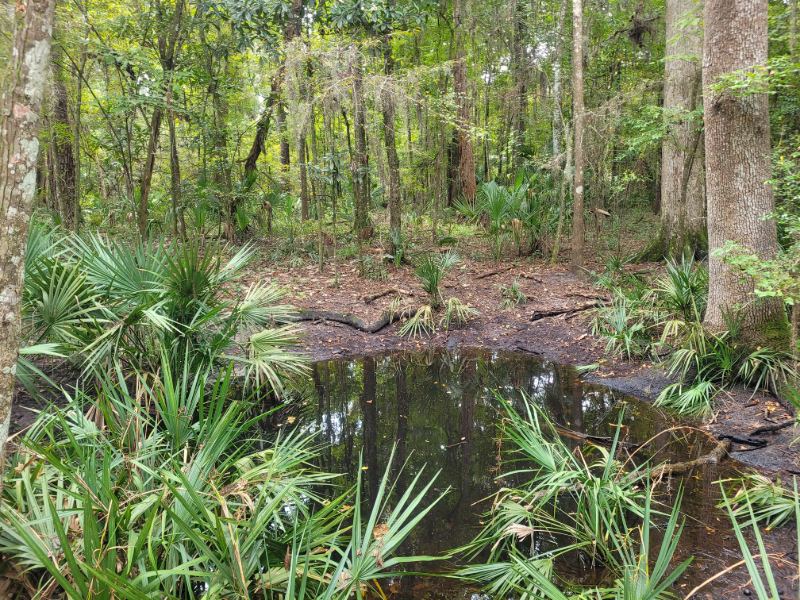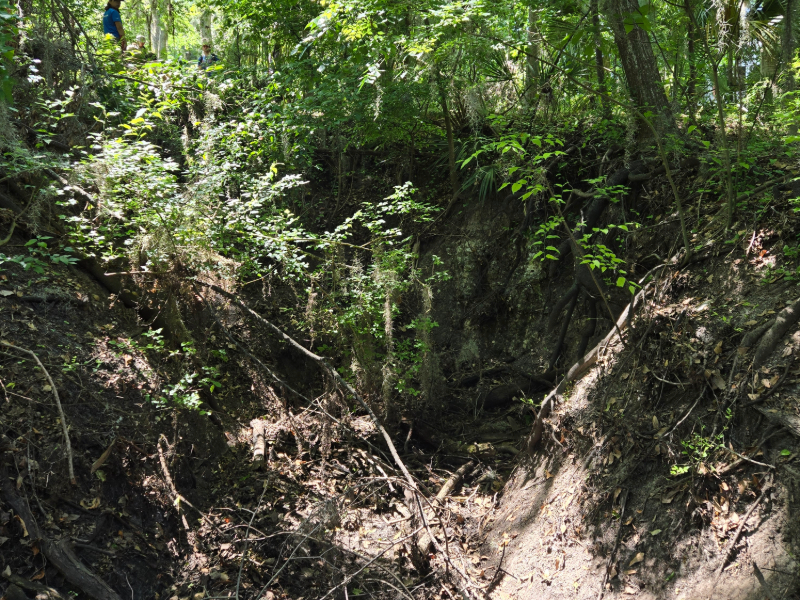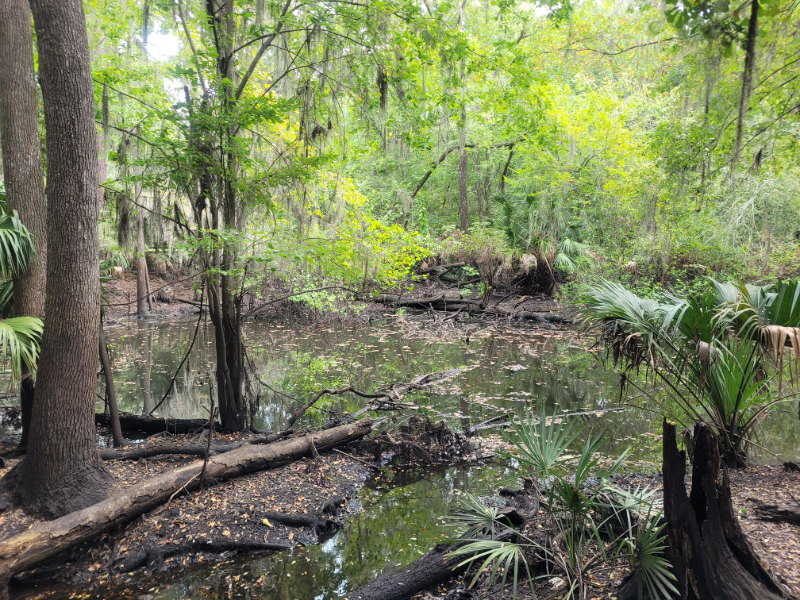Sinkhole Pond
Sinkhole ponds and sinkhole lakes are deep, funnel-shaped depressions that occur within areas of karst topography. Most sinkhole ponds are associated with upland hardwood forests and mesic hammocks, such as those found in North Florida and the Panhandle. Sinkhole vegetation can be diverse and depends on the matrix community where the sinkhole developed. Because of this, no wildlife species are inherent to the sinkhole community alone. However, ephemeral sinkhole ponds do not support predatory fish and are often an important breeding ground for many amphibian species.
NATL contains several sinkholes; the largest is located along its southern boundary. Water levels fluctuate dramatically throughout the year with incoming surface water from nearby areas, including the central marsh of NATL-east. The water drains directly into the Florida aquifer, and when too much water accumulates, temporary flooding can occur. Such flooding closed Surge Area Drive for several days in February 1998 and September 2005.




